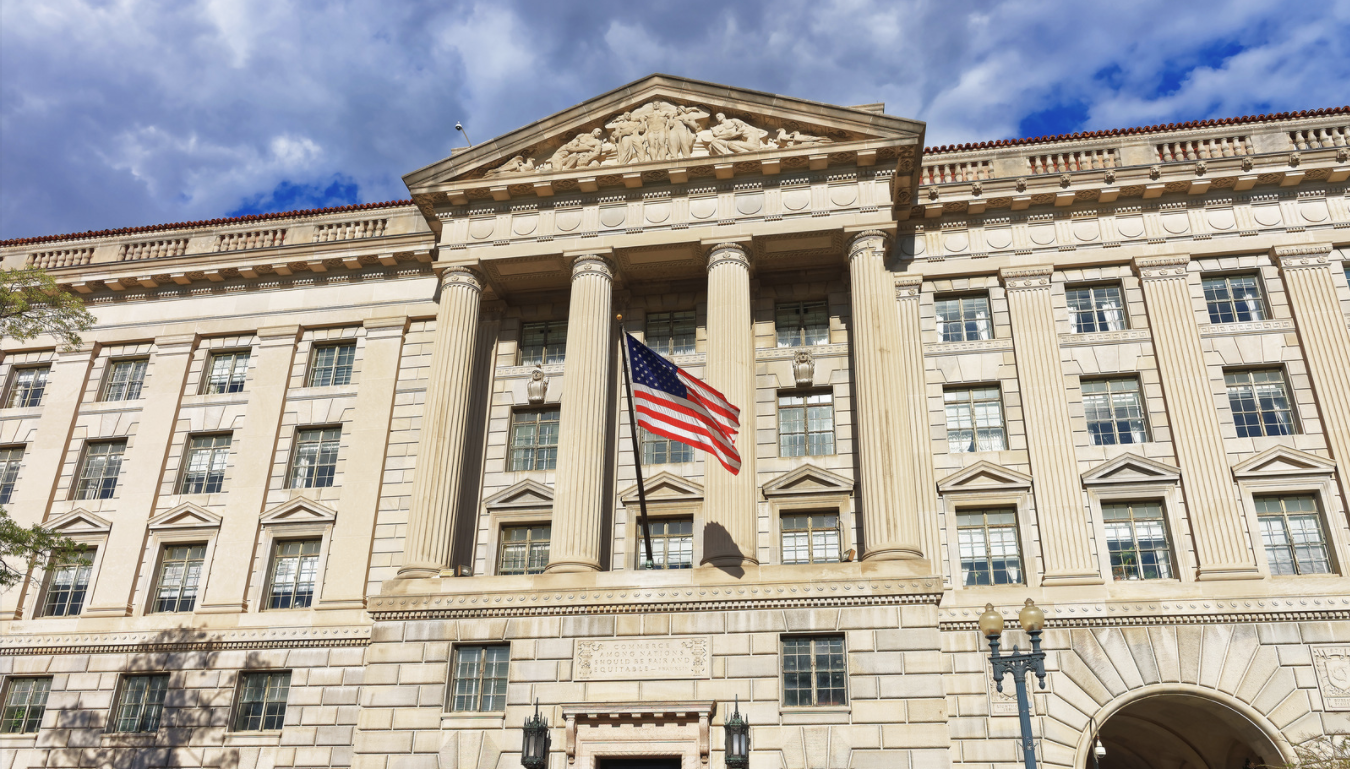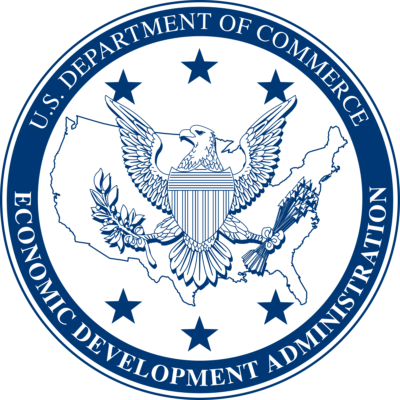Renne Public Policy Group (RPPG) provides a breakdown of funding opportunities for states and local governments through the U.S. Economic Development Administration that will support economic recovery and resilience in the aftermath of the COVID-19 pandemic.
By Jake Whitaker, Manager of Grant Writing and Research

On July 22, 2021, U.S. Secretary of Commerce Gina Raimondo announced the Economic Development Administration’s (EDA) “Investing in America’s Communities” initiative. This new initiative is intended to support economic recovery and resilience in response to the COVID-19 pandemic’s profound impact on the nation’s short-term and long-term economic outlook. $3 billion in funding was allocated to EDA as part of the American Rescue Plan Act (ARPA).
 The Investing in America’s Communities initiative contains a suite of six major competitive grant programs: the Economic Adjustment Assistance Program; the Good Jobs Challenge; the Build Back Better Regional Challenge; the Travel, Tourism, and Outdoor Recreation Program; the Indigenous Communities Program; and the Statewide Planning, Research, and Networks Program. EDA is also making a Coal Communities Commitment, allocating $300 million to support communities that have historically relied on the coal industry in creating new jobs and expanding new industry sectors.
The Investing in America’s Communities initiative contains a suite of six major competitive grant programs: the Economic Adjustment Assistance Program; the Good Jobs Challenge; the Build Back Better Regional Challenge; the Travel, Tourism, and Outdoor Recreation Program; the Indigenous Communities Program; and the Statewide Planning, Research, and Networks Program. EDA is also making a Coal Communities Commitment, allocating $300 million to support communities that have historically relied on the coal industry in creating new jobs and expanding new industry sectors.
In a webinar discussing EDA’s new suite of programs, Acting Assistant Secretary for Economic Development Dennis Alvord characterized the ARPA allocation as being “among the most significant special budget allocations in our nation’s history.” This one-time money will be available in 2021 and 2022, with deadlines staggered throughout the upcoming year.
EDA seeks to fund projects that advance bottom-up economic development and prioritize the creation of living wage jobs.
Economic Adjustment Assistance Program
The Economic Adjustment Assistance (EAA) Program is a long-standing staple of EDA’s investment portfolio, with a wide range of applicable uses. EAA funds can support infrastructure investments, technical assistance, economic development planning efforts, and revolving loan programs. Projects funded through EAA should catalyze public-private partnerships to foster collaboration, attract investment, create jobs, and promote economic resiliency and prosperity.
Traditional infrastructure investments include: water and sewer improvements, industrial parks, high-tech shipping and logistics facilities, workforce training facilities, business incubators and accelerators, brownfield redevelopment, technology-based facilities, wet labs, telecommunications infrastructure, and other infrastructure projects related to job creation and job retention.
$500 million in ARPA funds have been allocated to EAA. $100 million in funding is being set aside for Indigenous Communities, and an additional $200 million is being set aside as part of EDA’s Coal Communities Commitment. Applications through EAA are accepted on a rolling basis throughout the year. However, EDA suggests that applicants submit their proposals by March 15, 2022. There are no maximum award amounts, but EAA typically funds individual projects with a total cost in the range of $5 million to $7 million.
Good Jobs Challenge
The goal of the Good Jobs Challenge is to get Americans back to work by establishing or strengthening regional systems to train workers with in-demand skills through employer-driven training models that support participants with wrap-around services and employer commitments to hire program participants. Activities will be categorized into three phases:
Phase I – System Development: Funding to help organizations establish and develop workforce systems and sectoral partnerships.
Phase II – Program Design: Funding to develop skills training curriculum and materials, secure technical expertise to train workers, and secure employer commitments to hire.
Phase III – Program Implementation: Funding for non-construction projects to provide workforce training and connect workers with quality jobs, including wrap-around services.
EDA estimates awards of $1 million for System Development activities, $2 million for Program Design activities, and between $2 million to $7 million for Program Implementation activities. Applicants do not need to fund activities in all three phases if the organization can verify the lack of need for an investment in those activities. For example, applicants in regions that already have established workforce systems and existing sectoral partnerships can request funding solely for Program Design and Program Implementation activities.
Beneficiaries of projects funded under the Good Jobs Challenge should be unemployed or underemployed workers from underserved communities or incumbent workers from underserved communities who are increasing their skills to apply for higher-paying jobs. EDA is providing $500 million in funding to support the Good Jobs Challenge nationwide. Applications are due January 26, 2022.
Build Back Better Regional Challenge
Proposals for the Build Back Better Challenge should include regional coalitions, industry support, and high-impact projects with a shared vision for a regional growth cluster. “Regional growth cluster” is defined as several entities working together as a coalition to grow a regional economy through the growth of an existing and/or creation of a new regional industry or industries. Clusters may align interconnected projects across state lines and/or across urban, suburban, and rural communities, but they are concentrated in a bounded geography relative to the needs and conditions of the region that ensures maximum collaboration and impact. Coalitions will need to develop applications that contain 3-8 strategically aligned projects. Awards under the Build Back Better Challenge will range from $25 million to $100 million per regional growth cluster.
The Build Back Better Challenge application process will include two phases.
Phase I – Technical Assistance: EDA will provide technical assistance grants, valued at ~$500,000, to 50-60 coalitions to support economic resilience and assist with preparing applications for Phase II. Applications for Phase I are due on October 19, 2021.
Phase II – Implementation Grants: Successful applicants from Phase I will be the only eligible applicants for Phase II, which will narrow down the scope of EDA’s investments further to support 20-30 applicants. Applications for Phase II are due on March 15, 2022. Funding amounts for individual projects are estimated to range from $750,000 to $25 million, or more if the project warrants it.
A total of $1 billion has been allocated to this program, with $100 million in funding from the Build Back Better Challenge set aside as part of EDA’s Coal Communities Commitment.
Travel, Tourism, and Outdoor Recreation Program
The Travel, Tourism, and Outdoor Recreation (TTOR) Program will accelerate economic recovery in communities impacted by COVID-related travel and tourism declines. Competitive funding is available to local communities that can demonstrate significant negative economic impacts resulting from the travel, tourism, and outdoor recreation industries. TTOR Competitive Grants will prioritize projects that directly support these three sectors, but EDA will also consider proposals for economic diversification projects.
Funding awarded to local governments cannot be used to fund destination marketing. EDA will fund construction activities, such as: water and sewer improvements, pier construction and improvements, new outdoor recreation and trail infrastructure, nature-based infrastructure projects that improve access to recreation opportunities, cultural, arts, and tourism facilities, workforce training facilities, and accessibility enhancements.
$750 million in funding will support the TTOR program, representing 25% of the total ARPA allocation to EDA. This money will be divided into two grant programs: a non-competitive State Tourism Grants ($510 million) program and a Competitive Grants ($240 million) program. Applications will be accepted on a rolling basis. However, EDA suggests that applicants submit their proposals by March 15, 2022. There is no specified maximum award amount.
Indigenous Communities Program
The Indigenous Communities Program will provide $100 million in funding to develop projects designed to create the conditions for economic growth in Indigenous communities and accelerate economic recovery from the pandemic. This competition is only open to Native American Tribes, nonprofits serving Native Hawaiians, and nonprofits serving Native Pacific Islanders.
A wide range of technical, planning, workforce development, entrepreneurship, and public works and infrastructure projects are eligible for funding under this program. Funds can be used to support traditional EDA infrastructure projects or non-traditional projects, such as health centers. Applications will be accepted on a rolling basis. However, EDA suggests that applicants submit their proposals by March 15, 2022.
EDA will provide non-competitive $1 million Planning Grants to each U.S. state and U.S. territory to prepare for and participate in EDA’s ARPA programming and other federal programming. These efforts will include strategic planning to support economic recovery. An additional $31 million will be allocated for competitive Research and Networks Grants to invest in research that assesses the effectiveness of EDA’s programs and provides support for stakeholder communities around key EDA initiatives. Applications for the Research and Networks program will be accepted on a rolling basis. However, EDA suggests that applicants submit their proposals by October 31, 2021.
EDA Investment Priorities
EDA prioritizes awards for competitive funding programs based on a set of established investment priorities. These priorities were recently revised under the Biden administration.
Equity: Targeting investments in underserved communities that have historically not been able to benefit from economic development opportunities. This includes underserved populations, including but not limited to women, Black, Latino, Indigenous, and Native American persons, Asian Americans, and Pacific Islanders or underserved communities in systemically challenged geographic regions such as Tribal Lands, Persistent Poverty Counties, and rural areas with demonstrated historical underservice.
Recovery and Resilience: Building economic resilience to and long-term recovery from economic shocks. Encompasses both natural disaster recovery and adjustment for transitioning economies, such as coal and power plant communities. Resilience is broadly defined as the ability of a community or region to anticipate, withstand, and bounce back from various disruptions to its economic base.
Workforce Development: Supporting workforce education and skills training activities directly connected to the hiring and skills needs of the business community that result in well-paying, quality jobs. EDA wants to develop a portfolio of projects servicing all industry sectors and meet the needs of a diverse range of different employers.
Manufacturing: Encouraging job creation, business expansion, technology and capital upgrades, and productivity growth in the manufacturing sector. EDA believes that manufacturing is a critical building block for the national economy, with the goal of supporting robust domestic suppliers and a strong supply chain.
Technology-Based Economic Development: Developing regional knowledge ecosystems that support entrepreneurs and startups, including the commercialization of new technologies, that are creating technology-driven businesses and high-skilled, well-paying jobs.
Environmentally-Sustainable Development: Addressing the climate crisis and long-term sustainability of our economic infrastructure through the development and implementation of green products, green processes, green places, and green buildings.
Exports & Foreign Direct Investment: Enhancing and building community assets to support growth in U.S. exports or increased foreign direct investment.
All proposals under the ARPA-funded programs must have an identified nexus to the Recovery and Resilience investment priority. Projects that align with multiple investment priorities may be considered more competitive by the EDA Investment Review Boards.
If you would like to discuss these funding opportunities further with an expert grant writer, please feel free to reach out to RPPG at (916) 974-9270 or contact the Manager of Grant Writing and Research directly via email at jwhitaker@publicpolicygroup.com.

